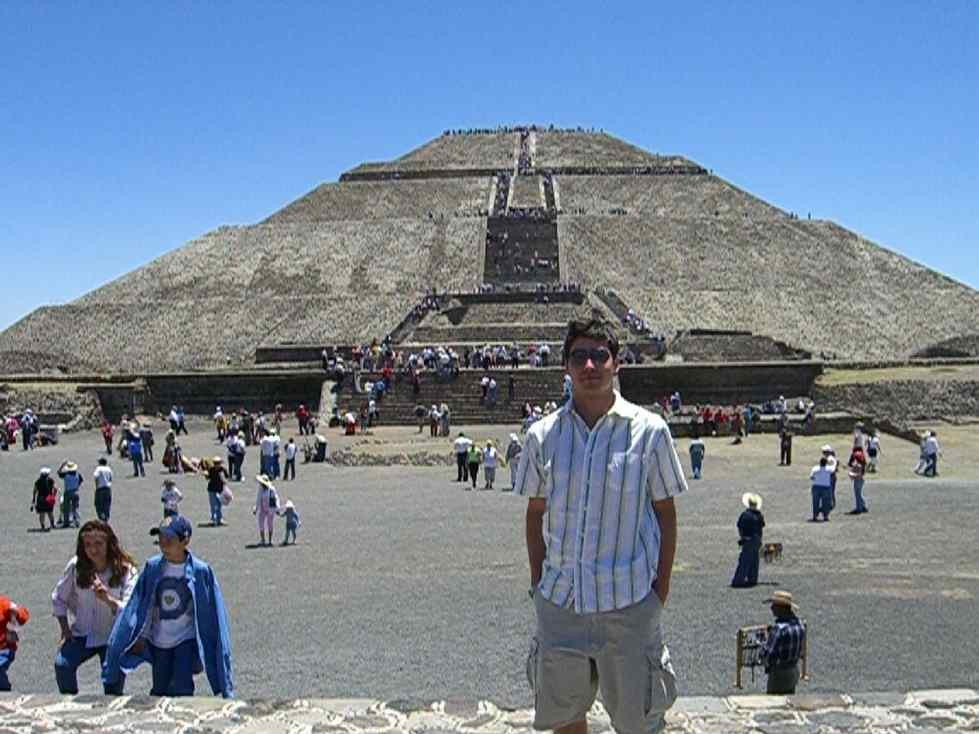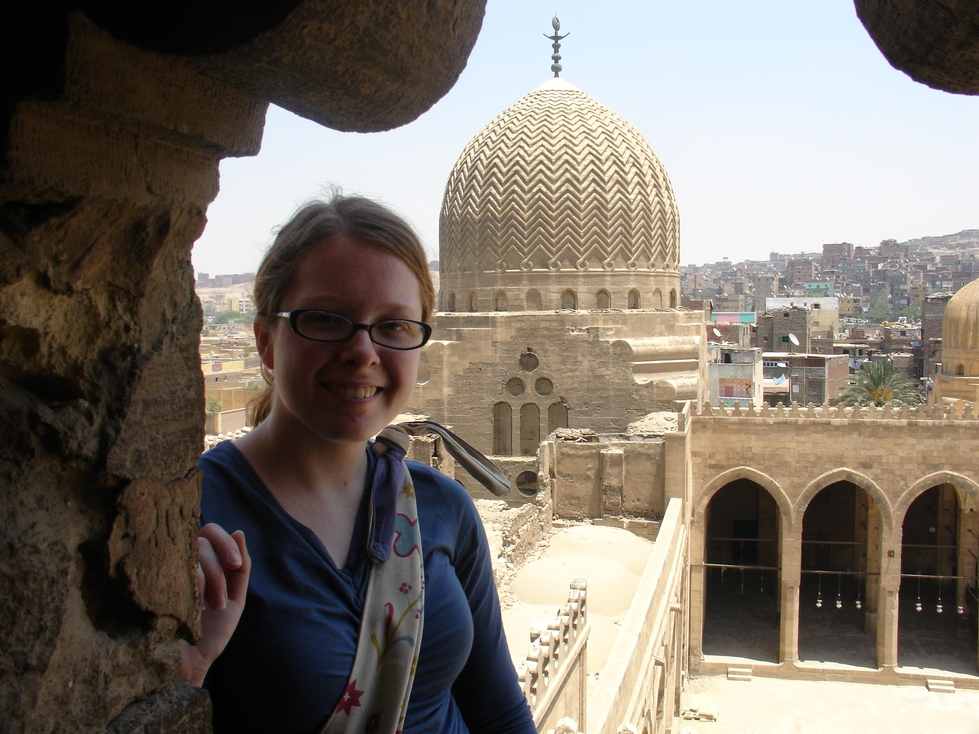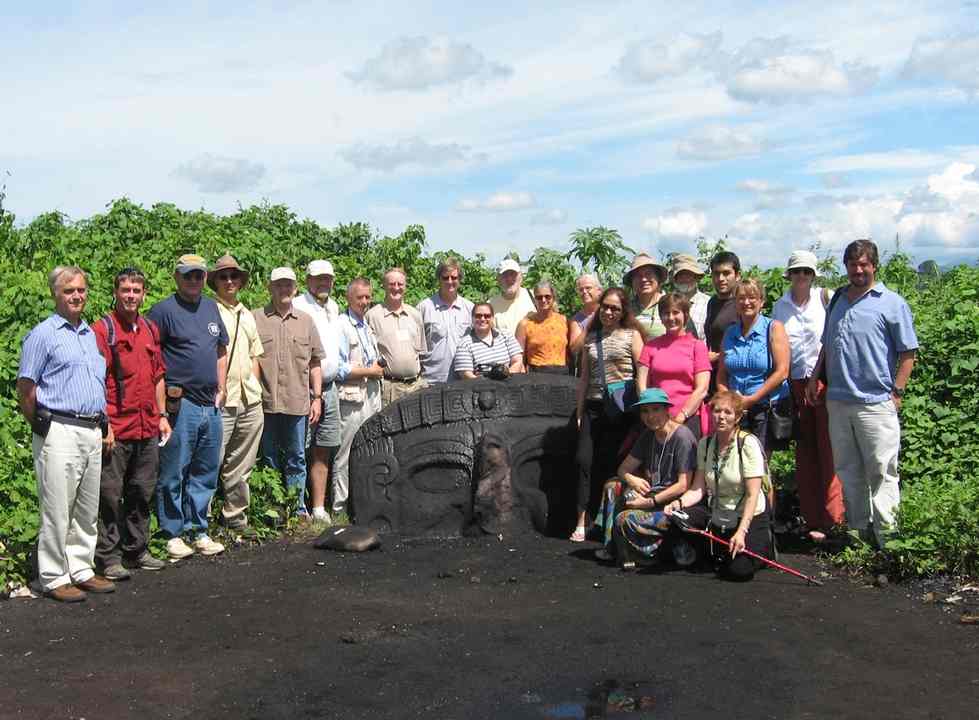Students and Faculty Enjoy International Study Programs
Gerard Kwiatkowski and Em Jacoby are two of several current GVSU mathematics majors who have enjoyed the privilege of studying abroad. Their experiences highlight the reasons the university and the mathematics department are actively encouraging all students to take advantage of this opportunity and demonstrate the impact that being abroad has on widening perspective on education and life in general.

From Hopkins, MI, Gerard is in his fourth year as a mathematics major at GVSU with an emphasis in secondary education. He spent the winter semester of 2006 studying abroad at Instituto Tecnologico de Estudios Superiores de Monterrey in Monterrey, Mexico. While there, he primarily took Spanish and culture/history classes, but he also had the unique experience of taking differential equations in Spanish!
Gerard says that the experience helped him to empathize with his students for whom English is a second language and that it also emphasized to him the universal language of mathematics – although the instructor taught in Spanish, all of the symbols and many of technical terms were similar to English ones. As to the overall experience of studying abroad, Gerard particularly enjoyed the very different cultural setting from GVSU at Tecnologico de Monterrey, as it is located in the center of a city of over three million residents. He said that the people of Monterrey are exceptionally kind; he felt welcome from day one, and this kindness made it very easy to adjust to the social and cultural differences that exist between Monterrey and Allendale. Gerard also enjoyed traveling extensively in Mexico; his favorite city was Guanajuato, located in the center of the silver mining region of Mexico that produces some of the highest quality silver in the world and at very economical prices. Other interesting aspects of the city are the mummies that the city is famous for and the fact that the old silver mines have been converted to underground streets, so you typically drive below ground while above ground streets are used for pedestrian traffic.
Gerard has also been extremely active in campus and community life, which he says has been among the best part of his time at GVSU. He has been involved with the Latino Student Union, Upward Bound, the Math Lab, and MTH 110 SLA (Structured Learning Assistance). After teacher assisting and student teaching in the 2007-08 academic year, Gerard looks forward to moving to San Antonio, Texas to teach high school mathematics while pursuing a masters degree in bilingual education with an emphasis in dual immersion at The University of Texas at San Antonio.
Originally from Holland, MI, Em Jacoby is finishing her third year at GVSU with a major in mathematics. She has especially appreciated all of the opportunities to study abroad and gain general education credit, so much that she has traveled to other countries to study three times! Em has studied at Sprachinstitut Tbingen (Tbingen, Germany), at American University in Cairo, Egypt, and at the Jordan Field School (archaeology with base camp at Yarmouk University, Irbid, Jordan). At these institutions her studies have included an intensive German Language course at Tbingen that met 26 hours a week in which the other 6 students in the class were from around the world, none from America; courses in Egyptian History and Culture, as well as Arabic, at American University; and classes in History, Middle East Studies, and Archaeology at the Jordan Field School where actual survey and excavation are supplemented with lectures by field director and supervisors.

Em says she loved such diverse experiences as living abroad in cities where she would ride the city bus or walk to school and walk daily to a market to purchase fresh bread and cheese, waking up to the call to prayer as it echoed loudly from hundreds of mosques around the city, and eating yogurt flavored ice cream (similar to Italian gelato) on the crowded sidewalks on the evening of holy day when families spend time together outside of their homes. While she found it difficult at first to be so alone in these adventures, she overcame the initial desire to hide in her apartment and found confidence by seeking new and eccentric experiences each day. This has led her to seek diversity in her routine in the States as well.
In addition to her studies, Em enjoyed traveling extensively while abroad. She has climbed a mountain at the foot of the Alps to reach a famous castle and stayed in a hostel established in the 1200s in Damascus where the beds and mattresses laid on the roof. Her studies and travels have made her much more aware of world news and interested in participating in her own country’s democracy with the viewpoint of having personal relationships with those whom our foreign policies affect. As for her own education, studying abroad has made her realize how easy it is to be a lifelong learner and how difficult it is to truly understand social concepts. Em sees mathematics as a form of stability in her life; mathematical theorems are true for all time and, unlike in the social realm, the concepts need not at any point be unlearned or reformatted.
When in residence at GVSU, Em has greatly appreciated her mathematics courses and the enthusiasm her professors bring to their courses. Grading Calculus II papers has served as a source of both employment and enjoyment. After GVSU, she plans to continue studying with a possible desire to become an academic, and perhaps one day work at one of the universities at which she has studied, such as at the American University in Cairo.
Professor Marge Friar spent a full week in July 2006 attending a Chautauqua National Science Foundation Short Course for College Teachers titled “Ancient Maya Mathematics in the Highlands of Guatemala.” In the course, twenty-four participants from the United States and South America (including mathematicians, math educators, physical science educators, anthropologists, an economist, a librarian, and an art historian) worked with the Mayan number system. In our familiar base-ten system (also called the Hindu-Arabic number system), we use ten digits (0,1, 2, …9). The Mayans, however, used only three symbols: a dot representing one, a horizontal bar representing five, and a shell symbol representing zero. The Mayans developed the important concept of zero 1500 years before it was used by Europeans. And while we use a place value system based upon powers of ten, the Mayans used a place value system based upon powers of twenty. They held 20 as a sacred counting number (based on their total fingers and toes!).
Understanding the history of numeral systems is important to everyone who teaches mathematics, but particularly teachers of elementary school students: this history reminds us of the early stages in the human development of numbers, much in the same way that early elementary students develop their own understanding of numbers. In fact, Professor Friar’s favorite courses to teach are the mathematics courses for those studying to be elementary teachers. She loves the content and the approach the department takes in teaching the course by modeling how we encourage our students to teach mathematics. She says the short course was a particularly enjoyable experience for the opportunity it presented to learn more about the Mayan numeration system in the very land where it was conceived. She looks forward to opportunities to share the Mayan numeral system and its history with students in her Math 221 and 222 classes (Mathematics for Elementary Teachers I & II), such as through her pictures of a Mayan stone structure that shows the bars and dots of their numeration system.

Like our students who study abroad, Marge found the entire experience to be one that widened her perspective on the world. She shares that one of the most thrilling parts of the trip was taking excursions that very few non-Mayan people in the world will ever get to have. For example, one day they needed to leave the tour bus, which could no longer travel through the rutted path through the sugarcane field, and walk until they found two large boulders which were carved Mayan ruins that are still used today by Mayans on pilgrimages. In addition, traveling by tour bus, the participants saw both the gorgeous landscape of Guatemala along with the poverty of people living in shacks, with laundry hung over bushes and on rooftops. Marge says that it was difficult to see trash strewn over the side of a beautiful lush mountain, and simultaneously surprising to see a Guatemalan man at a make-shift café (comedor) with a laptop computer. The group also traveled from Guatemala City to Antigua (a World Heritage site for its Spanish colonial architecture), as well as to Panajachel (on the shores of Lake Atitlan) and Chichicastenango.
Professor Friar has taught in the mathematics department at GVSU since 1982. She particularly enjoys working with colleagues dedicated to excellence in classroom teaching. Away from school, she has been fortunate to enjoy a wide range of travels, including trips to Mexico, Finland, Russia, Sweden, Estonia, and the Bavarian region of Germany.

